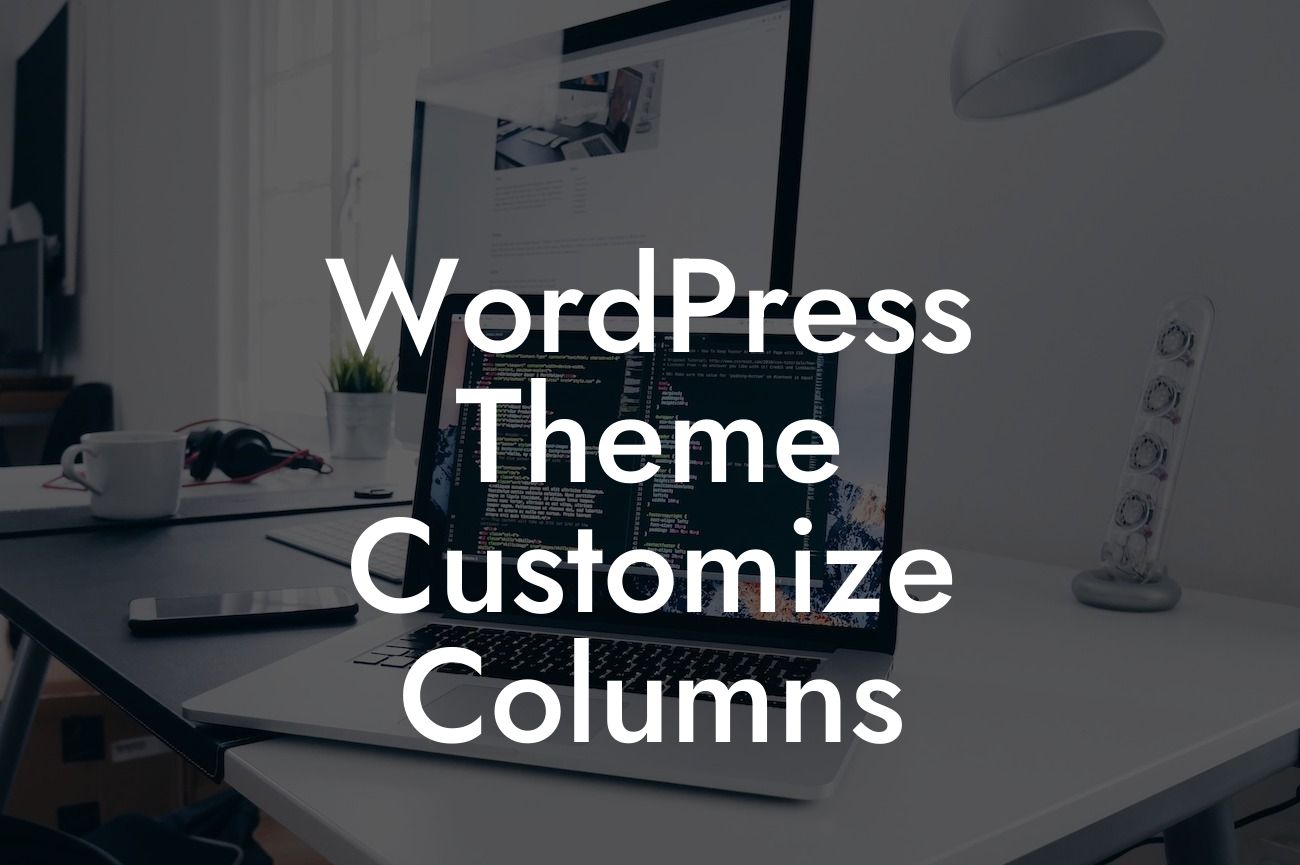Customizing columns on your WordPress theme can give your website a unique and professional look. Whether you want to showcase your portfolio, display pricing plans, or create a visually appealing blog layout, custom columns can greatly enhance your online presence. In this article, we'll guide you through the process of customizing columns on your WordPress theme, providing you with the necessary knowledge to take your website to the next level.
Customizing columns in WordPress is easier than you might think. Follow these steps to get started:
1. Choose a suitable theme: Before customizing columns, it's important to select a theme that supports this feature. Look for themes that offer flexible layouts and customization options. Themes like Divi, Genesis, and Avada are popular choices for their extensive customization capabilities.
2. Install and activate a page builder plugin: To customize columns, you'll need a page builder plugin that provides you with intuitive drag-and-drop functionality. Popular options include Elementor, Beaver Builder, and WPBakery Page Builder. Install your preferred plugin and activate it.
3. Create a new page or edit an existing one: Once your page builder plugin is activated, create a new page or edit an existing one where you want to customize the columns.
Looking For a Custom QuickBook Integration?
4. Access the page builder interface: With the page open for editing, look for a button or icon that allows you to access the page builder interface. Each plugin may have a different method for accessing it, but it's usually clearly indicated.
5. Add a column block: In the page builder interface, you'll find various blocks or modules. Look for the column block and add it to your page. Most page builders offer different column layouts, allowing you to choose the number of columns and their widths.
6. Customize the column appearance: After adding the column block, you can customize its appearance. Change the background color, add borders, adjust padding, and experiment with other styling options provided by your page builder plugin.
7. Add content to the columns: Now that you have your columns set up, you can start adding content to them. Simply drag and drop elements like text, images, buttons, or videos into each column. Arrange the content as desired, and take advantage of the page builder's formatting options.
Wordpress Theme Customize Columns Example:
Let's say you have a travel blog and want to showcase your latest posts in a two-column layout. Using a page builder plugin like Elementor, follow the steps outlined above. Create a new page, add a two-column block, customize the column appearance to match your branding, and start adding your blog posts. With a few adjustments, you can create an engaging and visually appealing layout for your audience to explore.
Congratulations! You've successfully customized the columns on your WordPress theme. Take a moment to admire your new and improved website layout. But the customization options don't end here. DamnWoo offers a range of awesome WordPress plugins that can further elevate your online presence. Explore our other guides to learn more about optimizing your WordPress site and trying out our plugins. Share this article with others who may find it helpful in their customization journey. Remember, at DamnWoo, we're all about embracing the extraordinary!













